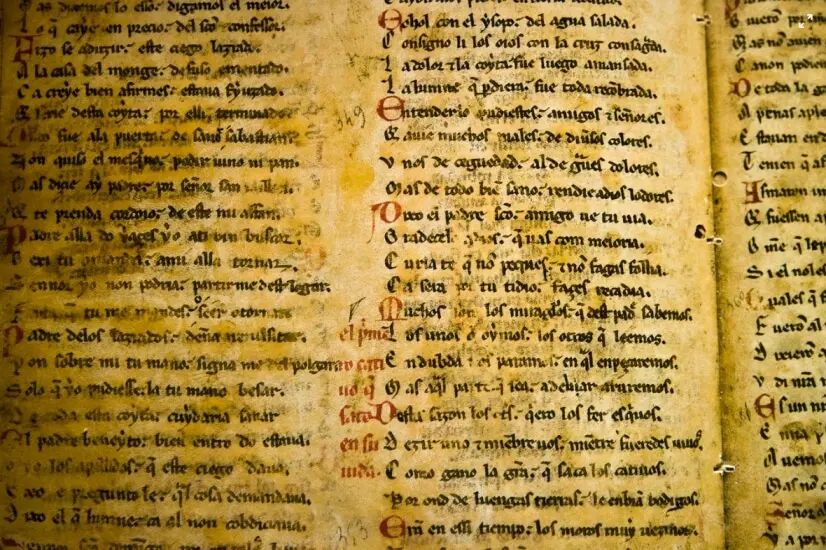Stone's Throw
Initially a poetic labor of love, Stone's Throw was distilled into a typical "chosen one" narrative after the death of Aristotle Jacques, who never got to finish writing it.
Book
An elaborate story about Alistair Stone, a young human knight, who meets and woos Lady Suzette Thea, and the two of them set off on a quest to unit Ignis and Alchester. At least that's what Aristotle Jacques intended it to be. After his assassination, Patrick Douglas saved the draft, but when Douglas himself was later taken out, Lord Reginald Arnol took the manuscript and changed it to a fairly generic "chosen one" story about Alistair Stone, a handsome and talented knight who was skilled at fighting fae. Shades of the original characteristics still shine through, however, making it a favorite story of many disadvantaged humans who see Stone as a role model.
English, a bit outdated given when it was written
Fairly normal structure, but notoriously rambling due to it being less of one whole story and more a few short stories tied together.
Takes itself very seriously
Would be considered fantasy to us, but given the setting, it's considered realistic or historical fiction.
A few hundred years before the main story of Iron and Ash.
Started as a roundabout way of telling the story of how Aristotle Jacques met Mab (in the form of Alistair Stone and Lady Suzette Thea), but later shifted to focus more solely on Stone, although Lady Thea also got significant page time.
In the original draft, several elements of the quest to join the kingdoms, such as conflicts about the conscription, a forbidden romance, and traitorous royals. The edited draft was greatly different, and much more idealized.
Almost all, even in the original draft since the names and characterizations of the people involved were changed.
Given the faery-human conflicts of the past few hundreds of years, the believability of the story (a young faery-hunting knight and his lover go on an adventure) is very high.
While the original focused on the importance of listening to the "other side", the edited one focuses more on the importance of heroics and the necessity (or lack thereof) of self-sacrifice.
- Stone's white horse, signifying death.
- Lady Thea's elaborate iron ring (given to her as an engagement ring by a cruel lord) serves as both a weapon and a key, symbolizing arranged marriage at the time
A few people have seemed intent on trying to find the original draft of the story, with some claiming they had. They had not.
Became the single most popular story in Alchester, even among the peasantry.
Has amassed a large group of fans, including Louis Rennerman and Arthur Nest (who has read the original one, having access to the royal library and archives)
Stone's Throw was first written down in an amateur flurry of first love and idealization, but the edited version was essentially bastardized by an enemy of the deceased author to take out the more explicitly pro-faery parts. It's told as an adventure story, while it was intended to be a lesson.
Very well received, becoming known as the single most popular story in Alchester.
The first draft, which was much more pro-negotiation.
A play, which is often performed by acting troupes.
- Pretentiousness and an overpowered lead
- Some people firmly believe in a different first draft
- Boring and rambling
In the heart and mind of Aristotle Jacques, trying to write down his experiences.
A collection of notes by Aristotle Jacques, collected by Lord Reginald Arnol and changed.
Aristotle's part in the exploration to The Elnore Woods and romance with Mab.
- The humans and fae were at odds, both trying to take the others' land.
- Conscription had not yet been stopped, and many soldiers were there against their will
- King Michael Norwood was viewed as weak and a poor leader, which impacted the portrayal of King Edmond
-
Aristotle Jacques was very sympathetic to the fae and wanted open negotiations - His lover, Mab, was fae and two of his close friends (Patrick Douglas and Miette Lenard) were soldiers conscripted against their will
- Lord Reginald Arnol, who would later publish the edited version, had a deep dislike for Jacques, who he saw as a starry-eyed dreamer. Lord Arnol ended up killing Jacques, but blamed it on a faery ambush to further discredit the negotiation movement
- Lord Arnol also killed King Michael, which plays into the portrayal of Benedict Lenore, who kills King Edmond and takes his throne.
